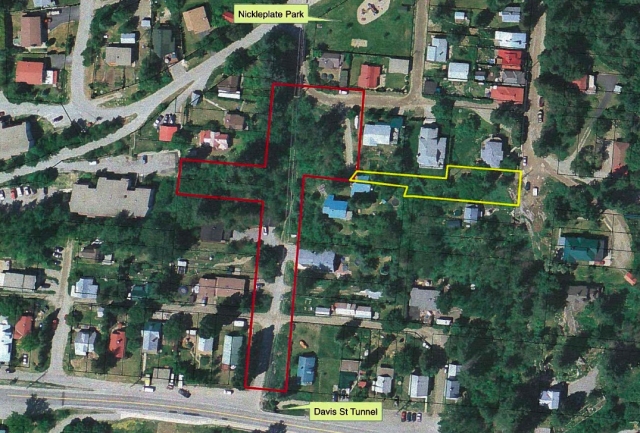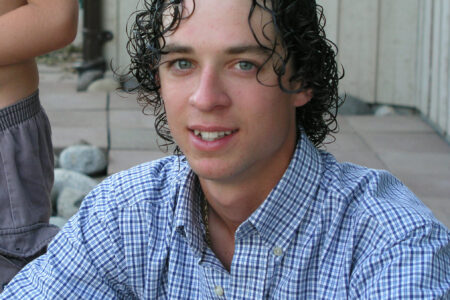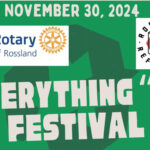Davis Street Trail and Earl Street Spur contested in council
Louise and David Sidley addressed three council meetings in a row to oppose the construction of the “Earl Street Spur,” a trail that connects the Davis Street Trail to Earl Street through the First Avenue right-of-way.
On July 2, the Sidleys prepared a petition signed by a number of neighbours that opposed the Earl Street Spur on the grounds that “it is not part of the Active Transportation Plan (ATP)”, that it “opens concerns for privacy, trespassing, and loose dogs” for five residences, “poses safety concerns,” “serves no additional purpose,” and “has a limited seasonal use.” They presented it to council on July 16.
This petition was followed by a list of concerns and questions that they presented to council on Aug. 13. In particular, they cited concern with “compromising our access and parking,” along their driveway which is on the Davis Street right-of-way from First Ave, leading to their garage.
The Sidleys noted their displeasure at the proposed “intersection of three trails at the top of our stairway.” They wanted to know where the money for the trail was coming from and why that money wasn’t spent on projects the Sidleys deemed to be more important. They said that they had received little notice about the city’s plans, and reiterated their concern that the Earl Street Spur had not been included in the ATP, in which the Davis Street Trail had been listed as a “low priority.”
Specifically, the Sidleys asked three questions: “1. Have the trails and sidewalks identified on the ATP [prepared in 2009 by Stewart Spooner] as high priority and addressed on line in the five year budget been completed as directed? 2. How are individual residents who are adjacent to proposed trails being notified? 3. May we please have your support in opposing the construction of the Earl Street Spur trail?” They also listed a number of safety concerns, including “vehicles clashing with trail users” and steep, gravelly trails.
The Sidley’s comments led to Mayor Greg Granstrom interjecting at one point to call for “respect,” but later, Granstrom assured the Sidleys, “We will get staff to get answers to the questions you have asked.” He added, “Everyone has to understand that this is city property we’re talking about.”
Complicating the issue, the Sidley’s garage significantly encroaches into the city property that would be used for the Earl Street Spur.
Maturo wrote to council that the Earl Street Spur was “initially identified” by Spooner and planning staff, but “is currently not identified as a priority [in the ATP] because of the encroaching structure.”
“The city has no encroachment agreement [with the Sidleys],” he added, “The encroaching carport also covers a four inch water main … that will eventually need to be looped to the existing main within the Davis Street [right-of-way].”
Spooner responded to the Sidley’s concerns in a letter on Aug. 27—the letter is included as part of council’s information on the issue that can be downloaded at the bottom of this article.
Spooner wrote that the ATP and the priorities he outlined in 2009 had “required many creative assumptions based on my best judgment of the community’s needs.”
“Since then,” he continued, “the city has developed the beginnings of a comprehensive urban trail network, and has had the opportunity to assess and revise community needs based on observed actual usage patterns and extensive feedback from residents.”
Maturo wrote a memo to council explaining the city’s trail construction plan: “Non-motorized use on the city’s dedicated [right-of-ways] is the backbone of the ATP, with an emphasis on creating trails within undeveloped corridors to enhance the amenity for cyclists and pedestrians.”
Currently pedestrians have only “difficult access” uphill from the Davis Street Tunnel in the direction of Nickleplate Park, the arena, and points east such as the schools. He explained that increased interest and use of this route since 2009, including “steady inquiries from area residents about improving the link,” is the reason the ATP’s original “low priority” for the trail no longer applies.
Acknowledging the trail’s current status as a “goat path,” Maturo wrote, “The plan is to use the expansive width [of the right-of-way] to create a mildly graded 10 foot wide switchbacked, compaction-gravel trail.” He said access to the Sidley’s residence “will not be compromised by trail development,” and noted that their access is on a public right-of-way, “not on a private driveway.”
Spooner concluded, “It is entirely reasonable and responsible for city planning staff to revise their priorities based on this new information, and I support their conclusion that this new trail will meet community needs.”
Addressing safety concerns, Spooner added, “Given the unexceptional physical characteristics of the site, and the very limited vehicle use (it only accesses one residence) such concerns seem unjustified, especially in comparison to many other locations within the city where higher levels of vehicle and pedestrian use coexist without issue.”
Maturo concurred with Spooner’s safety assessment and added that the trail was to be built from a portion of the $45,000 budgeted in 2012 for urban trails, and that there was a good possibility of receiving a matching grant for the Davis Street Trail under the Cycling Infrastructure Partnership Program (CIPP).
City staff suggested that council proceed with the trail as planned, but noted the alternatives: 1) to not build the Davis Street Trail and withdraw from the CIPP program, or 2) to build an alternative route that would require a covered stairway at additional cost and the possible loss of the CIPP grant.
The Sidleys nevertheless returned to the Sept. 4 meeting to reiterate their concerns and their call to eliminate the Earl Street Spur. They claimed their questions had not been answered, said they were “bewildered” about the change to the ATP, and asserted that “going off onto Earl Street will not meet CIPP criteria.” They also said they had a “bigger issue with City Hall and communication with citizens.”
As council prepared to vote unanimously in favour of building the trail as planned, Coun. Kathy Moore clarified that the vote concerned only the Davis Street Trail and not the Earl Street Spur.
Whether or not the spur will be built remains uncertain. On Aug. 13, Coun. Cary Fisher had stated his support for the trail network and the Davis Street Trail, but said he was “against giving up access, parking, and privacy for a trail that’s not going to be used by anyone pushing a stroller, or anyone over 40.”
Coun. Jill Spearn had said the Earl Street Spur “made no sense,” calling it “steep, forested, bear habitat.” She said, “I don’t know how it all evolved, but we have to be careful as a council that we stay aligned to the ATP as best we can.”
Addressing the ATP on Sept. 4, Moore called it a “living document” and noted that priorities change with changing circumstances. “I love the ATP, I think it’s great,” she said, recalling the numerous public consultations that the document entailed, “but we have to be careful to stay within the guidelines. If we go in a different direction, we need to notify the public.”

























